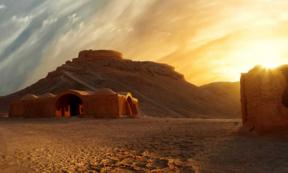Ancient Mesopotamia
Welcome to our comprehensive section on Mesopotamia, the cradle of civilization! Situated in the fertile land between the Tigris and Euphrates rivers, Mesopotamia is a region of immense historical significance. Often referred to as the "land between the rivers," this ancient region of civilization emerged around 3500 BC and flourished for thousands of years, leaving an indelible mark on human history.
In this dedicated section, we invite you to embark on a journey through time, delving into the rich tapestry of Mesopotamian culture, society, and achievements. From the earliest Sumerian city-states to the mighty Babylonian empire, Mesopotamia witnessed the rise and fall of numerous civilizations, each contributing unique innovations and advancements that shaped the course of human development.
Explore the extraordinary achievements of Mesopotamia's remarkable people, who pioneered fundamental elements of civilization such as writing, law, architecture, mathematics, and astronomy. Discover the awe-inspiring ziggurats that reached towards the heavens, the meticulous cuneiform script that chronicled daily life, and the visionary rulers whose ambitions reshaped the region's destiny.
Uncover the intricate social structure of Mesopotamia, where kings, priests, warriors, and farmers played distinct roles in a complex societal framework. Learn about the religious beliefs that permeated every aspect of life and the intricate mythologies that captivated the hearts and minds of ancient Mesopotamians.
As you navigate this section, you will gain a deeper understanding of the legacy left by Mesopotamia, as its inventions and cultural achievements continue to resonate throughout history. Our aim is to provide you with a comprehensive resource that unveils the marvels of Mesopotamian civilization, allowing you to appreciate the profound impact it has had on the world we inhabit today.






































